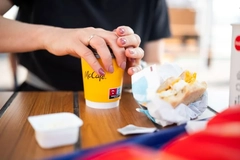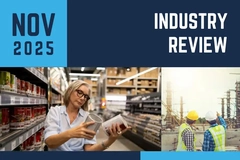
- Industry news
Industry news
- Category news
- Reports
- Key trends
- Multimedia
Multimedia
- Journal
- Events
- Suppliers
Suppliers
- Home
- Industry news
Industry news
- Category news
- Reports
- Key trends
- Multimedia
Multimedia
- Events
- Suppliers
Suppliers
Material reduction cuts waste and drives innovation in packaging design
Key takeaways
- Industry experts argue that lightweighting and monomaterials are essential to meet new regulatory and consumer demands.
- Banding technology replaces shrink wrapping, cutting material use by up to 60% and energy consumption by 98%.
- Industry experts stress that data-driven life cycle analysis, not perception, should guide material reduction choices between paperboard and recycled plastics.
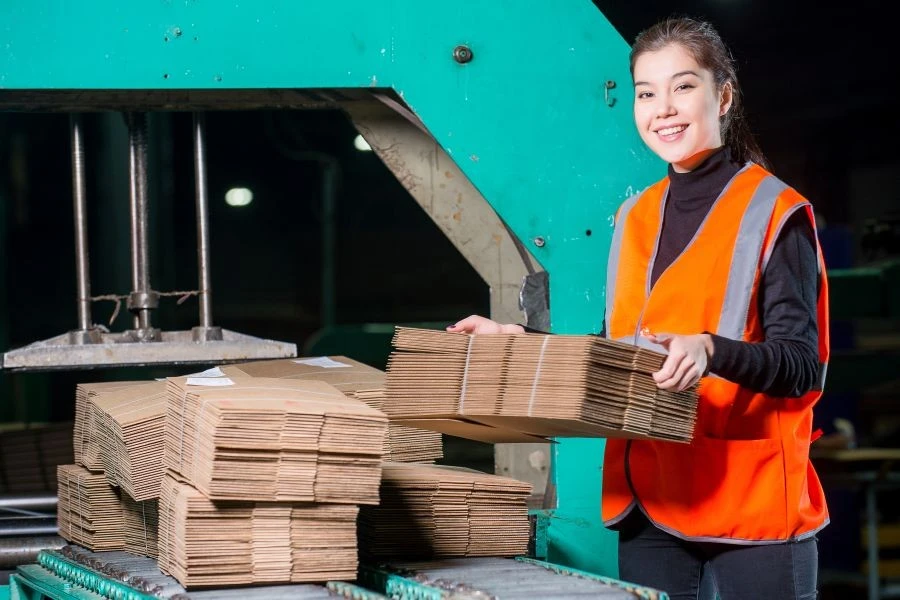
The shift to monomaterials and innovative packaging designs offers a solution to meeting evolving material regulations and consumer expectations. Reducing and simplifying packaging, such as lightweighting and banding, may alleviate the pressure that packaging brands and suppliers face.
Packaging Insights speaks to industry players ATS-Tanner, Colpac, Sabert, DS Smith, and PakTech about the latest material reduction trends and how they’re incorporating them.
“Consumers want transparency on material origin, constituent recyclability, and environmental efficiency. Carbon assessments are no longer sufficient, and instead, the focus is on full circularity, which is a huge challenge for customers and the packaging industry,” tells us Chris Else, head of design at DS Smith.
“Increased scrutiny is partly driven by public access to data and metrics that were previously considered secondary. Today, there’s as much interest in the whole sustainability story of acquiring goods as there is in the primary packaged item.”
ATS-Tanner adds: “Brands are increasingly adopting single-material packaging to enhance recyclability. This approach reduces contamination in recycling streams and simplifies sorting processes.”
“Packaging is becoming more streamlined, focusing on essential elements to reduce material usage. This trend aligns with consumer preferences for simplicity and sustainability.”
According to Talia Goldman, ESG director for Europe at Colpac and Sabert, lightweighting has evolved from a cost-saving exercise into a regulatory and reputational necessity.
“UK policies such as packaging EPR (pEPR) and Recyclability Assessment Methodology, single-use plastics bans, and other plastic restrictions across Europe have driven brands to simplify formats.”
The trends she spots include:
- Lightweighting to increase units per ton
- Preference for monomaterial
- Recycled content in paperboard and plastic packaging
- Material coatings from natural resources.
Gary Panknin, sustainability officer and supply chain manager at PakTech, says: “The conversation around material reduction should be rooted in data and full lifecycle performance. True progress comes from understanding what genuinely reduces environmental impact, not just what looks more sustainable at first glance.”
Banding replaces shrink wrapping
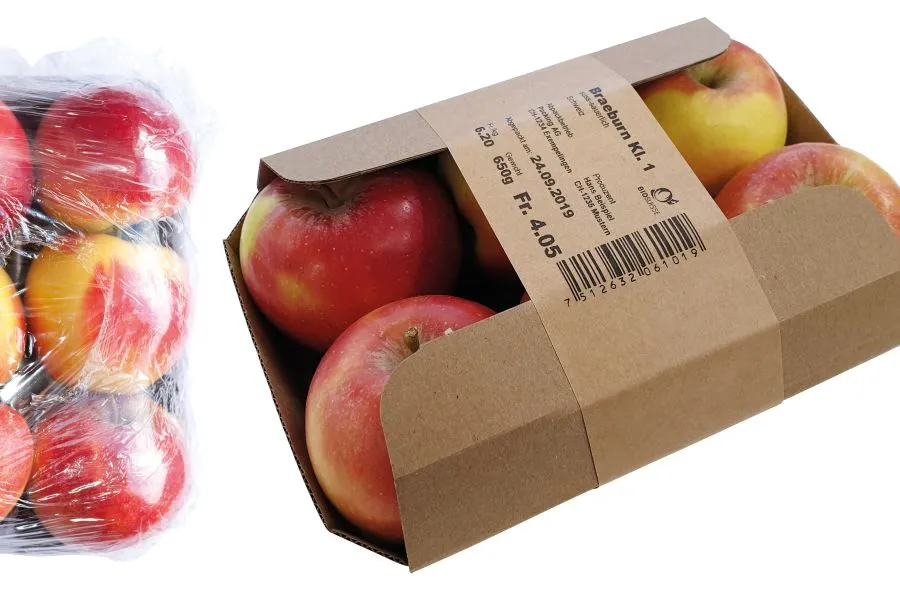 ATS-Tanner says its banding technology can “significantly” reduce material usage (Image credit: ATS-Tanner).ATS-Tanner highlights its banding technology as the latest packaging solution it provides to “significantly” reduce material usage. “Compared to traditional shrink wrapping, ATS-Tanner’s banding technology offers significant advantages in sustainability and efficiency.”
ATS-Tanner says its banding technology can “significantly” reduce material usage (Image credit: ATS-Tanner).ATS-Tanner highlights its banding technology as the latest packaging solution it provides to “significantly” reduce material usage. “Compared to traditional shrink wrapping, ATS-Tanner’s banding technology offers significant advantages in sustainability and efficiency.”
“Banding uses a minimal paper or film band to hold products together, reducing material usage by approximately 60% and cutting energy consumption by up to 98% compared to shrink wrapping solutions. The bands are recyclable and can also serve as identification tags, eliminating the need for additional adhesive labelling materials.”
The company says that, in contrast, shrink wrapping relies on large amounts of plastic film, consumes more energy, and is often more difficult to recycle. Banding is “a more environmentally friendly and cost-effective solution” while maintaining product protection and presentation.
“Reducing packaging materials can lower costs by using fewer raw materials and reducing shipping weight. It also strengthens brand image, as eco-friendly packaging appeals to environmentally conscious consumers,” continues ATS-Tanner.
Material reduction can encourage innovation and creative packaging design and smaller, lighter packaging can improve efficiency throughout the supply chain, according to ATS-Tanner.
Monomaterial foodservice solutions
Goldman says that Colpac and Sabert take an “eco-design approach” to product development by utilizing paperboard materials from renewable sources, designing efficiently to reduce material waste, minimizing plastics, and lightweighting where possible.
“This supports the reduction of overall environmental impact throughout a packaging product’s lifecycle. We also focus on product quality and performance, so we carefully reduce materials to ensure that food safety, food protection, and customer experience are not compromised.”
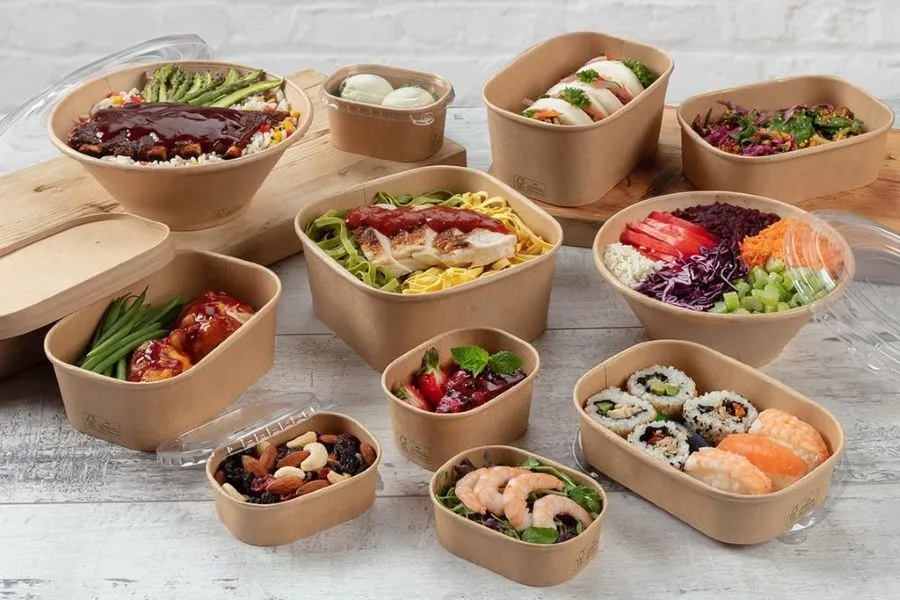 Colpac's on-the-go food packaging developed to use less material than alternatives (Image credit: Colpac).She says that Colpac’s continuous product development cycle enables it to make changes to material types, weights, and coating thicknesses. “With Sabert, we have more opportunities to bring innovations to market and offer an even broader range of products to customers.”
Colpac's on-the-go food packaging developed to use less material than alternatives (Image credit: Colpac).She says that Colpac’s continuous product development cycle enables it to make changes to material types, weights, and coating thicknesses. “With Sabert, we have more opportunities to bring innovations to market and offer an even broader range of products to customers.”
“We have recently pioneered the use of Direct Food Contact (DFC) inks in foodservice for one of our key customers. We replaced plastic laminates with DFC inks and coatings and lightweighted the paperboard used, which resulted in the customer’s projected pEPR unit cost being reduced by 55%.”
The key challenge for the food packaging market, according to Goldmain, is balancing reduction with functionality.
“Food-to-go packaging still needs to protect and present chilled, hot, and greasy foods, often on the move. If lightweighting undermines product quality or shelf life, brands risk lessening the consumer experience or causing additional food waste, which can outweigh packaging gains,” explains Goldman.
She also argues that there are risks around material choice. Packaging EPR fees could potentially encourage brands to switch back to plastic or to cheaper, lower-quality packaging that doesn’t hold the required food safety certifications.
Optimizing material choice
Else says DS Smith’s customers want to reduce carbon, stay green, and lower costs. “It’s no longer sufficient to simply increase batch sizes or reduce print, so we create bespoke solutions that tick the ‘must-have’ boxes and maintain or increase their sustainability credentials.”
While low carbon remains high on the agenda, legislative pressure means being green isn’t going to be optional, he argues. “We help our customers to understand the changes, the challenges, and the solutions available, while keeping costs as low as possible.”
“Material reduction is about smarter solutions. As designers, we have a responsibility to challenge assumptions around a problem and push for change that is sustainable and commercially viable, rather than just tweaking the format,” says Else.
“Reusing or refilling fibre-based packaging has long challenged traditional infrastructure. Keeping recyclable fibre out of the recycling loop would dramatically impact demand for virgin fibre — a negative outcome for circularity. Likewise, turning to more robust materials for multi-trip packaging could reverse the trend of material reduction.”
Paper vs recycled plastic
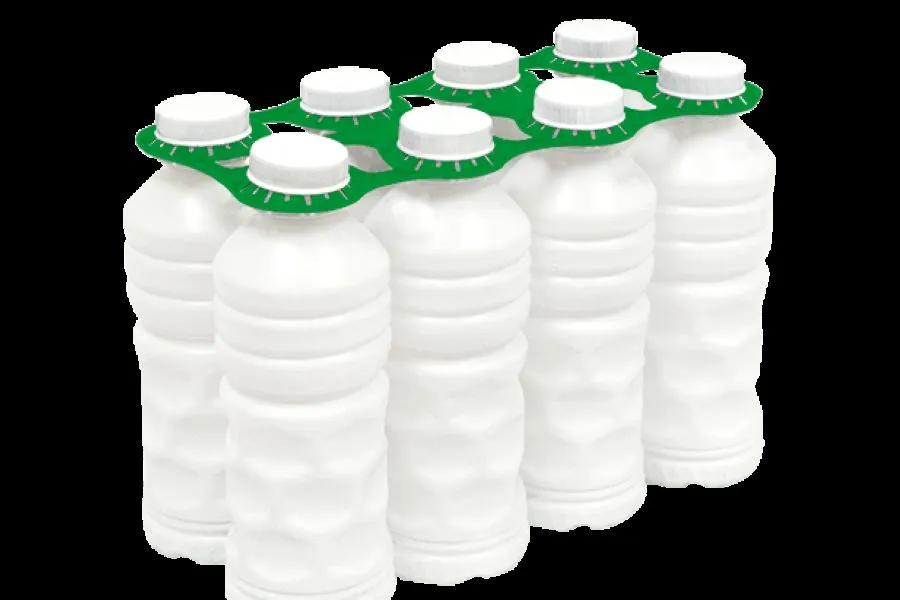 PakTech's handles made from post-consumer recycled high-density PE (Image credit: PakTech).PakTech’s Panknin notes that he’s seen a lot of momentum around material reduction over the past few years, driven by principles of the circular economy and resource efficiency.
PakTech's handles made from post-consumer recycled high-density PE (Image credit: PakTech).PakTech’s Panknin notes that he’s seen a lot of momentum around material reduction over the past few years, driven by principles of the circular economy and resource efficiency.
“But sometimes the conversation has been guided more by perception than by data. For instance, we’ve seen a strong move, particularly among larger consumer brands and retailers, toward paperboard packaging because it’s often seen as ‘greener’, among other characteristics.”
He points out that if the focus is on the environmental impact and the full life cycle, including factors like weight, water use, and energy demand, the issue becomes more complex. “Data shows that lightweight, monomaterial plastics made from fully recycled content typically have a lower carbon footprint.”
“Compared to paperboard, for instance, these materials tend to use less energy and water, and weigh considerably less, which can translate into lower emissions during transport,” says Panknin.
“When it comes to material reduction, we have gone back to basics: starting with design. Instead of trimming around the edges, we focus on removing excess altogether. By using a structurally efficient injection-molded design, we are able to eliminate entire layers of secondary packaging while still keeping products secure, easy to carry, and consumer-friendly.”
The results Panknin points to include lightweight handles that he says can deliver the same functionality as multi-panel paperboard at only a quarter of the weight per multipack. “Each handle is designed to use a precise amount of material and deliver maximum functionality.
“Our handles are made entirely from post-consumer recycled high-density PE, and they don’t rely on virgin resin.”
